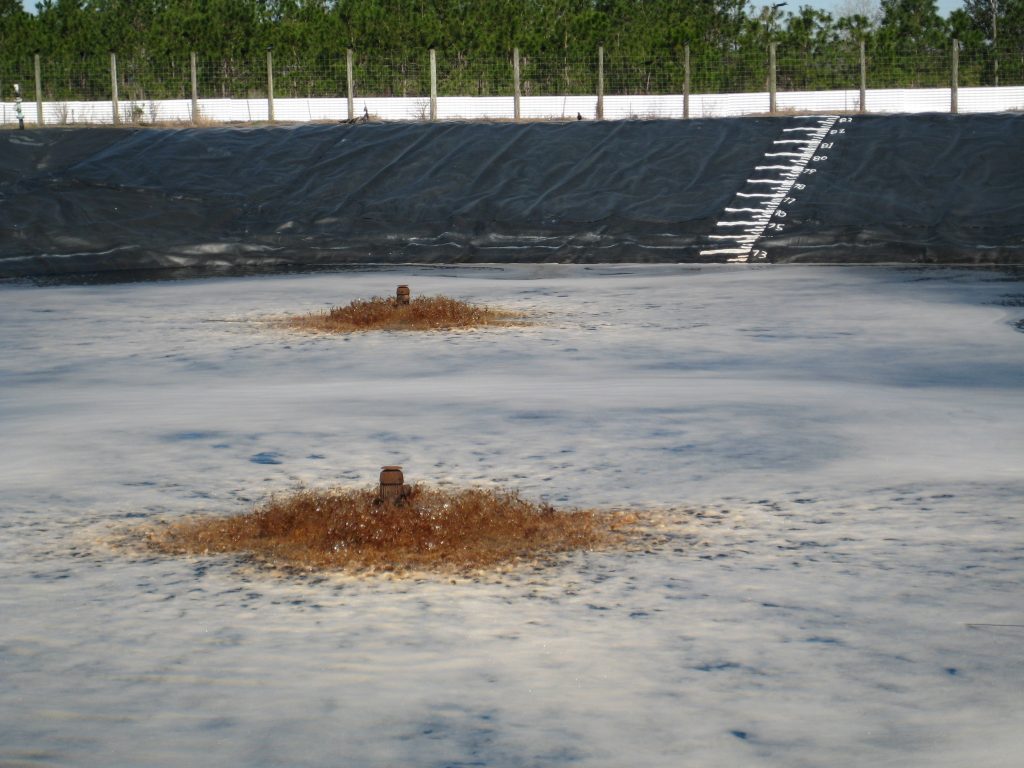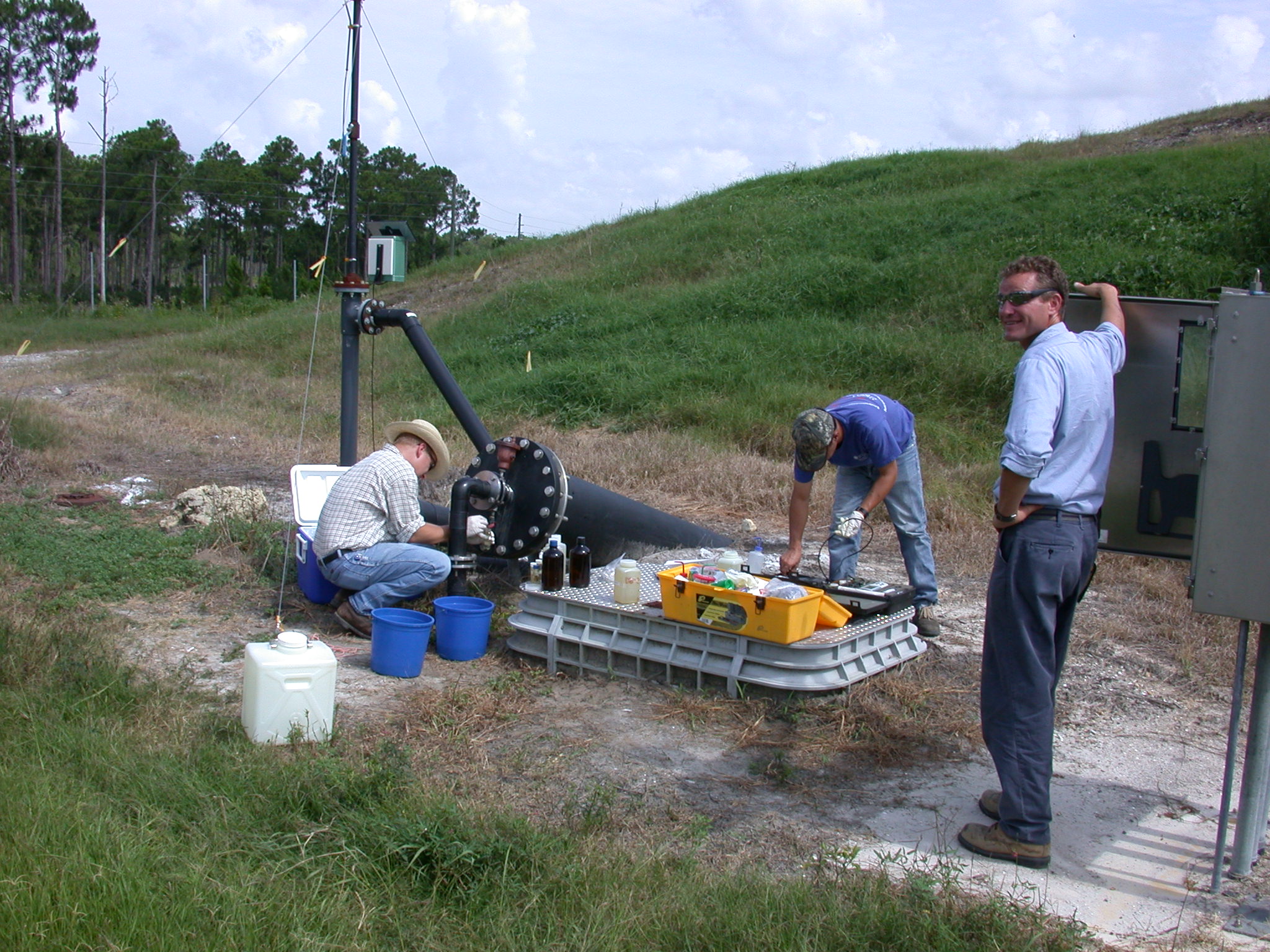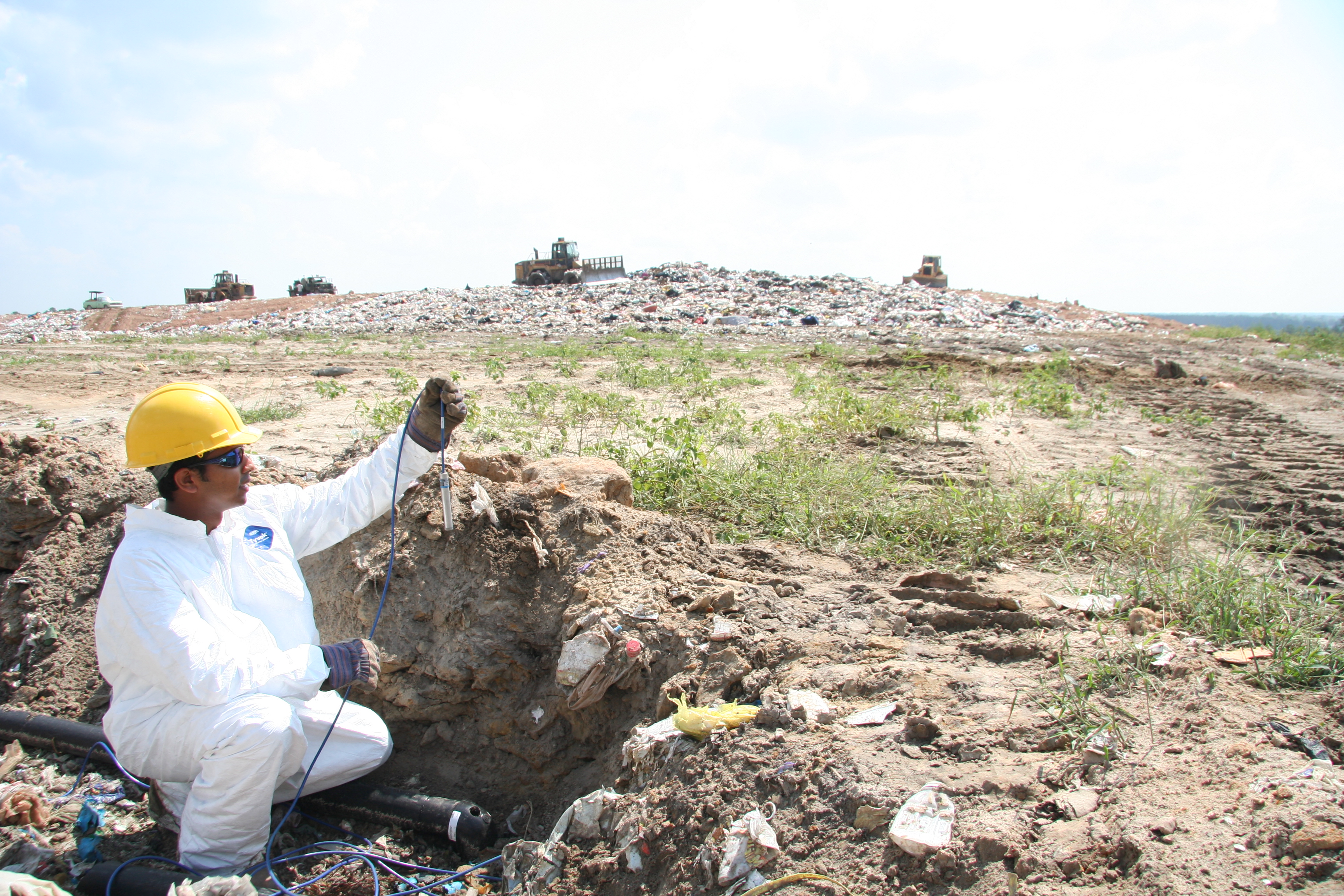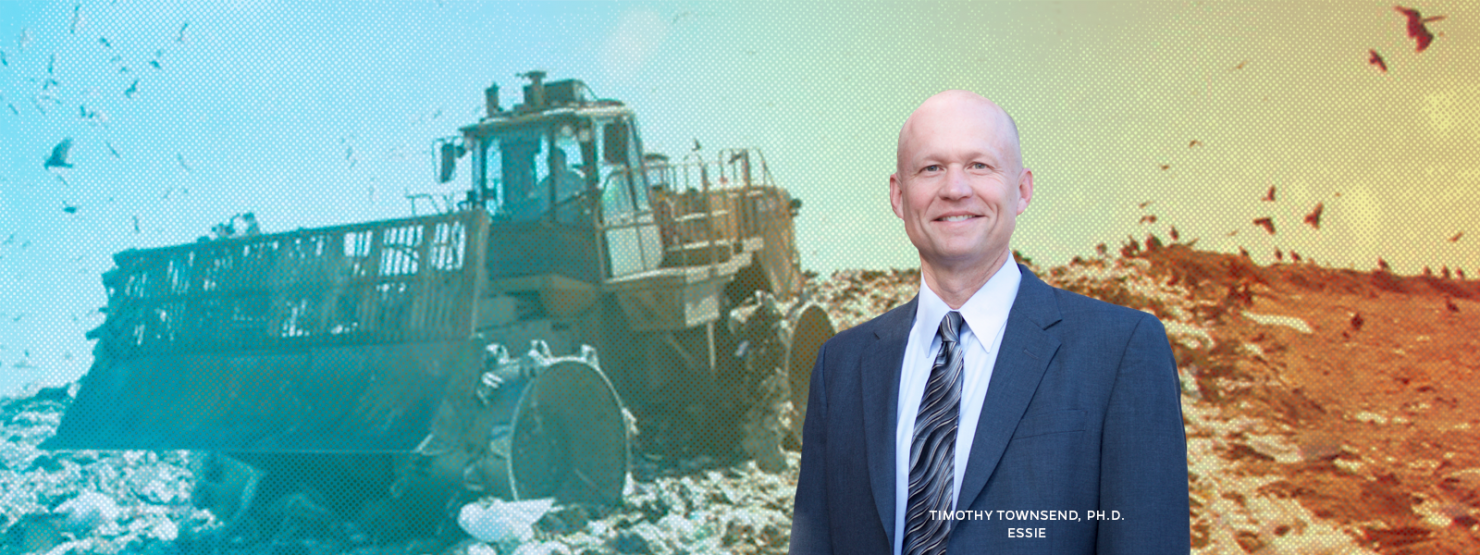Municipal solid waste (MSW) includes the household waste we carry to the curb each week in our trash cans and recycle bins. Most MSW is composed of food, paper, plastic, and a variety of other discarded products and packaging materials. In the United States, roughly half of our MSW is recycled or burned to produce energy. The rest of it is disposed of in landfills, often along with other waste streams such as medical waste, water treatment sludges, and construction and demolition debris.
Modern landfills in the U.S. are designed and operated to protect the environment. One major challenge is that rainwater interacts with MSW and produces leachate, a liquid residue that must be properly captured and treated. Landfill leachate can contain almost anything that people throw away – large amounts of salts from food scraps and paper products, organic chemicals from decomposing organic matter, nutrients such as ammonia, and, most worrisome to human health, trace amounts of harmful or toxic chemicals. When people throw away a battery containing lead or cadmium for example, a lamp made using mercury, or a pesticide or out-of-date pharmaceutical, small amounts of these components may potentially end up in the leachate. It is the role of the environmental engineer to develop, design and implement effective and cost-efficient treatment solutions for this complicated wastewater stream.

Leachate results from the interaction of rainwater and landfilled solid waste, and geomembrane-lined lagoons, such as the one shown here, are often used to store and treat leachate.
Today, for the most part, the engineering profession has developed treatment technologies that address the myriad different chemicals encountered in leachate. In recent years, however, potential health concerns form a newly appreciated suite of trace chemicals has emerged on the national stage: per- and poly-fluoroalkyl substances (PFAS). Thousands of PFAS chemicals have reportedly been developed and used in a multitude of industrial and commercial products, including firefighting foams, water-repelling agents in our clothes and shoes, and in food product packaging. Because PFAS chemicals are designed for purposes such as repelling water and stains, and to keep materials from sticking to one another, they tend to be mobile and persistent when they enter the environment, and thus are not easily removed with existing treatment technologies.
Timothy Townsend, Ph.D., the Jones Edmunds Professor of Environmental Engineering in the Department of Environmental Engineering Sciences at UF’s Engineering School of Sustainable Infrastructure and Environment, and his team from the Sustainable Materials Management Research Lab (SMMRL) at UF, are spearheading research to study PFAS at landfills and our waste stream as a whole. “Today the scientific community recognizes that PFAS chemicals, many of which are known or suspected to impact human health, can be found in our water, surrounding ecosystems, animal life, and in every one of us right now,” Dr. Townsend said.
As the principal investigator (PI), Dr. Townsend is heading up a group of interdisciplinary collaborators that has received part of a $6M total grant from the U.S. Environmental Protection Agency (EPA) to study PFAS chemicals and their role in landfills. “These grants will help improve EPA’s understanding of the characteristics and impacts of PFAS in waste streams and enhance our efforts to address PFAS,” said EPA Administrator Andrew Wheeler.

Over the past decade, in an effort to address the research needs of Florida's solid waste community, UF faculty and students have worked with landfill operators throughout Florida to collect and analyze landfill leachate.
The EPA desires to know more about the extent to which PFAS chemicals enter the nation’s landfills, the fraction of these chemicals exiting landfills with leachate, and the extent to which modern landfills provide effective control of the PFAS found in the garbage we throw away every day. Of critical importance to EPA is the development of effective treatment technologies. One element of the new research will include an examination of the degree of PFAS removal being accomplished by existing treatment systems.
The project is an interdisciplinary effort of investigators from within UF and outside. Dr. Helena Solo-Gabriele (Professor, Department of Civil, Architectural, and Environmental Engineering at the University of Miami), a Co-PI on the EPA project, has been working with the SMMRL team on PFAS in landfills, with support from the Hinkley Center for Solid and Hazardous Waste Management, a statewide research center funded by the Florida Department of Environmental Protection and hosted at the University of Florida. Co-PI Dr. John Bowden, Assistant Professor at the Center for Environmental and Human Toxicology & Department of Physiological Sciences at the UF College of Veterinary Medicine, brings to the project a wealth of experience on PFAS analysis, with his UF lab providing state-of-the-art analytical capabilities. Dr. Katherine Deliz Quiñones, a research faculty member in the Department of Environmental Engineering Sciences at UF, provides expertise in toxicology and biochemistry. Battelle, a global research and development organization, houses nationally certified PFAS analytical facilities and serves as one of the top PFAS labs in the U.S.
Dr. Townsend reflected on the desired impact of this research study. “It will provide scientists, policy makers, landfill operators, and the entire industry much more clarity regarding the many unknowns concerning PFAS and landfills. We need to better understand which components of our waste stream are providing the greatest PFAS inputs to landfills, if and how much of the PFAS chemicals are retained or transformed in the landfill, and what methods of PFAS treatment are most effective. The answers to these questions can help direct national strategies such as targeted waste screening and reduction to reduce PFAS impacts, better landfill operational strategy, and the most effective treatment techniques,” he said.

ESSIE graduate students, such as the student shown here, build their research programs around solid waste and landfill-related questions posed by scientific, regulatory and industrial professionals.
This research will also provide significant experiential learning opportunities for undergraduate and graduate students in the environmental engineering discipline. “They will be interacting with landfill operators and others in the solid waste community, both through the collection of samples at multiple disposal facilities, and through the dissemination of research results. The students will play a critical role in the laboratory analysis and the performance of experiments to meet project objectives,” Dr. Townsend stated.
This project will span three years, with the researchers conducting studies at multiple landfill sites of all ages and waste characteristics, as well as laboratory simulations to test hypotheses resulting from field sampling and analysis. The ultimate goal is to allow the scientific community, policy makers and landfill operators to come up with new strategies for addressing the concerns of PFAS in our waste stream, with UF playing a leading role in this discussion.
